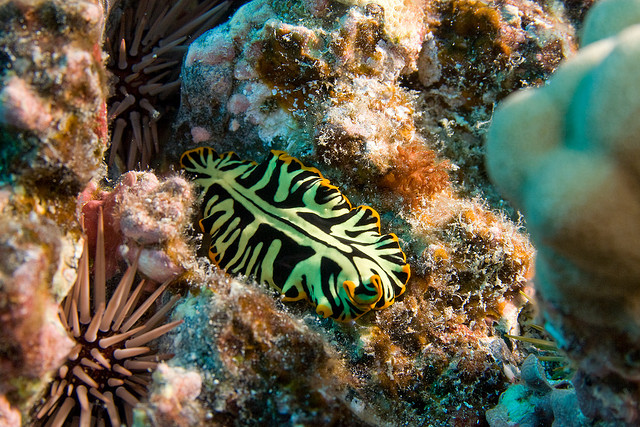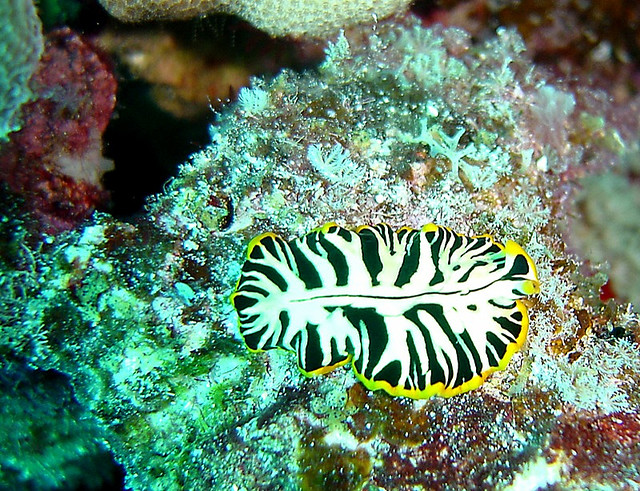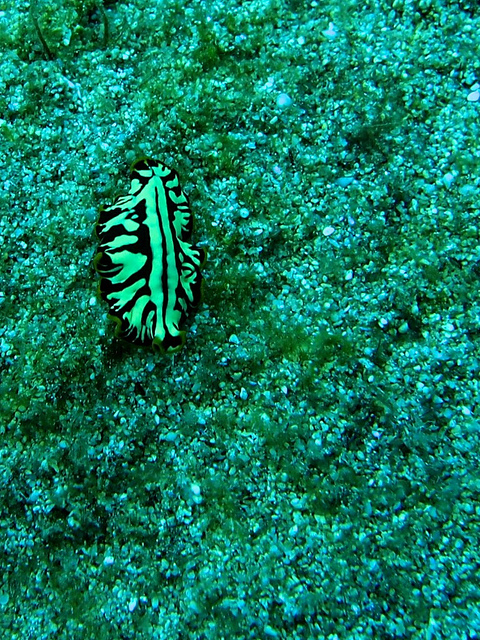Adaptations
The tiger flatworm is identified by obvious tiger-like stripes and coloration. Wavy black or dark brown stripes line the organism laterally from the center of the dorsal surface to the edge and usually end in a black dot. The background color of the animal can vary from whitish, to greenish, to orange. This bright coloration works as a visual defense against predators, marking it as an undesirable prey due to the chemical compounds absorbed from eating the orange tunicate (Taighler, 2008).
Tiger flatworms are very thin and dorsally flattened. They have bilateral symmetry and experience cephalization. The polyclad contains a cerebral ganglion knot in the anterior region, in which all nerve signals are received. The flatworm has mechanoreceptors along the epidermis to analyze its environment, as well as photoreceptors on eyespots in the anterior region to sense light. Because its eyespots, or ocelli, are extremely simple and cannot perceive much besides light direction and intensity, chemoreceptors are highly utilized by the flatworm to sense food and mates.
The tiger flatworm moves in a variety of ways: crawling (or creeping), swimming, and looping. Movement occurs through smooth, wavelike motions of the body, or undulations, by using muscles and body fluid that is kept under pressure in the mesoderm. It can also move across a substrate by beating the cilia on the ventral side of its body.
The tiger flatworm is a very small species, only growing up to about 40 mm in length. They do not have dorsal papillae, unlike many other polyclads, and are extremely delicate and smooth. They also do not have gills, but breathe by diffusion through their skin. The edge of the tiger flatworm’s body is lined with a number of marginal ruffles that depend on the size of the organism. Its epidermis is lined with thousands of cilia, and both the inner and outer muscles help to structure the flatworm. The flatworm also has a hydrostatic skeleton to further help form body structure.


